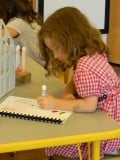How to Journal Like a Reporter: an Artist's Guide to Taking Notes
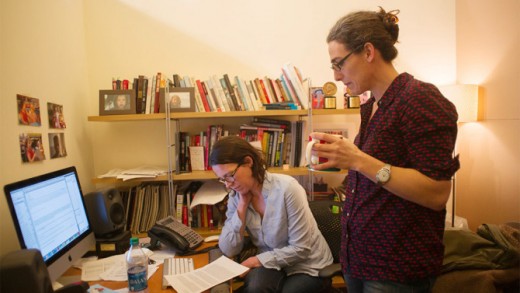
What is a Journalist? | "How to Journal" 101
What is a journalist? Look no further than Sarah Koenig, the grade A reporter and radio producer who brought us with Serial one of the most memorable and well constructed pieces of journalism in recent memory. If you don't know what I am talking about, watch the video to the right for an overview, or jump right into Serial : the podcast is positively addictive, and it works so well because of Koenig and her ability as an artist to keep a detailed journal.
A lot of things make Sarah a special breed of reporter, from her unique personality and style to her almost stubborn unwillingness to let a lead die, but the number one thing that makes her reporting successful is one of the most important things you can do as an artist in any field: Sarah takes rich, detailed, specific, incredibly useful notes.
In this guide you will learn how to journal like a reporter, and learn tips for turning the simple act of taking notes into a step in the artistic process of creation.
Do you keep a journal?
(tell us why or why not in the comments)
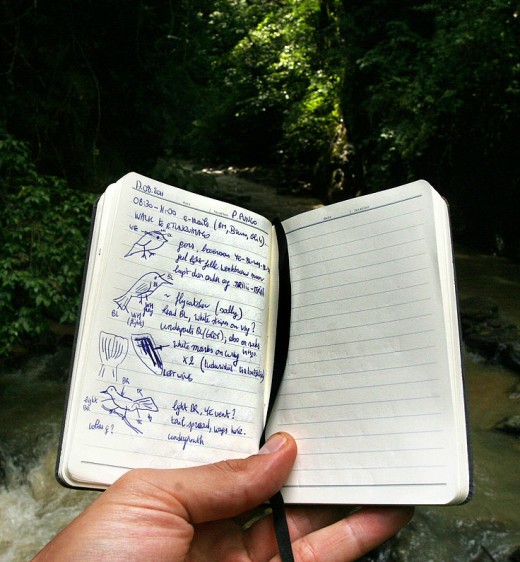
Why Do Artists Need Notes?
It doesn't matter what discipline you prefer to create within, or what medium you favor: all artists can improve their work by taking notes. Why? Taking detailed, specific notes allows the artist to capture a moment of inspiration that can later be refined and transformed into a finished artistic product.
You don't have to "take notes" in the traditional sense for this principle to hold true. Do you paint portraits? Keep a sketch book. Do you dance modern pieces? Videotape your choreography as it progresses. Taking notes, and keeping a vivid, well constructed journal, allows an artist to create better.
Journal Like a Reporter: 5 Steps to Taking Better Notes
World class reporters like Sarah Koenig take highly detailed and specific notes, but more importantly they takes notes which are useful. But how exactly do skilled reporters pull off the enormous task of processing their world in a useful way? How can your apply this concept of useful note taking to your artistic journaling, and take better notes to improve your creations? The 5 steps below will make it easier for you to journal like a reporter.
- Open your eyes wider
- Remove your filters
- MOVE YOUR HANDS. START JOURNALING.
- Re-read your notes
- Question yourself
Read the five steps below, and then jump right into journaling like a reporter to improve your art!
Open Your Eyes Wider
Are your eyes open? Good. Open them wider. As an artist, you need the widest view of the world that you can physically muster. And opening your eyes wide will help you journal for a number of reasons.
First, there is a lot that you will see in the world that can lead to a brilliant artistic product, if your eyes are open wide enough. If you aren't looking and paying attention, moments will pass you by that otherwise could have led to creation. "Open eyes" are a metaphor here of course: an artist needs open ears, a willing touch, and all of the senses willing to experience new things in order to journal successfully. Before you start writing things down, and doing the physical work of taking notes, you need to be in the right mindset, and that starts with opening your eyes wide.

Second, you can always edit; you can't always regain potential experiences. There is no reason for you yo have tunnel vision at the start of the note taking process. The wider your eyes, the more you will have to work with further down the road. Again, this process need not apply to writers exclusively: if you draw, draw everything, if you sing sing loudly and freely. You never know which notes will be the right ones until they are right.

Remove Your Filters
To journal successfully, you have to remind yourself that EVERYTHING can be important, and remove filters in your subconscious and conscious mind that would point you down one path or another. This goes hand in hand with opening your eyes wide, but is a more mental process that is worth noting and double checking. Of course, don't take this concept too far, or your journals will be filled with too many notes to process. If Sarah Koenig wrote down everything that everyone she interviewed ever said, she would have far too much to work with. But don't write too narrowly either: you will have time to edit later. (And don't worry too much if it seems hard to find this balance: it is, but you will get it with practice). Your eyes can be wide open and still focused on only one thing: by opening your mind as well, and removing preconceived filters and notions, you give your self the chance to journal successfully.
Move Your Hands. Start Journaling.
Getting in the right mindset, and opening your eyes wide, is important to successful journaling. Moving your hands and physically taking notes is more important.
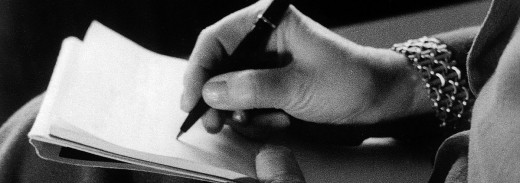
Remember, while your journal you should be doing your best to capture your exact, open minded open eyed perception of the world. In this step, you should be doing all you can to capture your experiences. If something is noteworthy to you, it is probably worth a note; if you find an idea crossing your mind, journal it, even if it might look mundane later.
If you aren't a writer, don't worry. If you paint, tip your brush and start a draft. Or bust out your sketch pad and get sketching. In the journaling stage, the artist isn't aiming to produce final products, but rather capture experience and inspirations which can later lead to brilliance. So get your hand moving, and start your journaling.
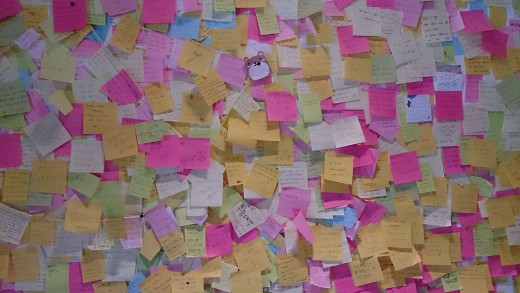
Re-read Your Notes
Especially if you are new to the concept of journaling, it is important to look back at what you have done and turn an honest eye to the work of re-reading your notes. Don't worry too much about editing at this stage of your work: that will come later. Instead, notice how well you are able to capture moments and experiences, and think about how you can journal more successfully moving forward. Do you struggle with sensory details? Return to step one, and really focus on all of the things you see, smell, hear, feel, and taste. Do you notice that your notes are highly focused, and look more like a revised outline than a stream of conscious impression of your experiences? Return to step two, and focus on removing preconceived ideas you have about what is important. You never know what ideas can inspire you, and it isn't your job to refine things too finely while you journal. As you re-read your notes, be honest about what you can improve on as you continue to journal.
Question Yourself
As you re-read your notes and move forward, give yourself the important reminder to question everything, especially yourself. If you think you are the greatest artist who ever lived, you most certainly aren't. The greatest creators throughout history revisit their thoughts constantly, and question themselves. Doing so in the context of journaling insures that you will improve in your note taking as you practice, and not fall into bad habits for too long. If you think you have the answers, think again, and always question yourself.
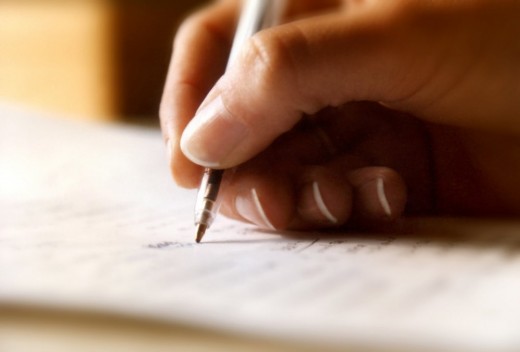
Conclusion: Why to Journal, and What Comes Next
As an artist, you are dependent in a large sense on moments and experiences; the little things in the big world that inspire you to create. By journaling well, and taking detailed notes, you give yourself the chance as an artist to capture these moments, and give your self the chance to transform them into refined and beautiful pieces of work at a later date. Sarah Koenig didn't sit down and create Serial without taking detailed notes first. Da Vinci didn't sit down and paint the Mona Lisa without sketching first. This step is important.
As you practice journaling, remember: you are not attempting to produce a finished product with the notes you take. All of the experiences you capture will eventually be revisited in a deeper and more meaningful way, and revised to produce a finished produce. For the artist, this revision is the next step in the artistic process.





